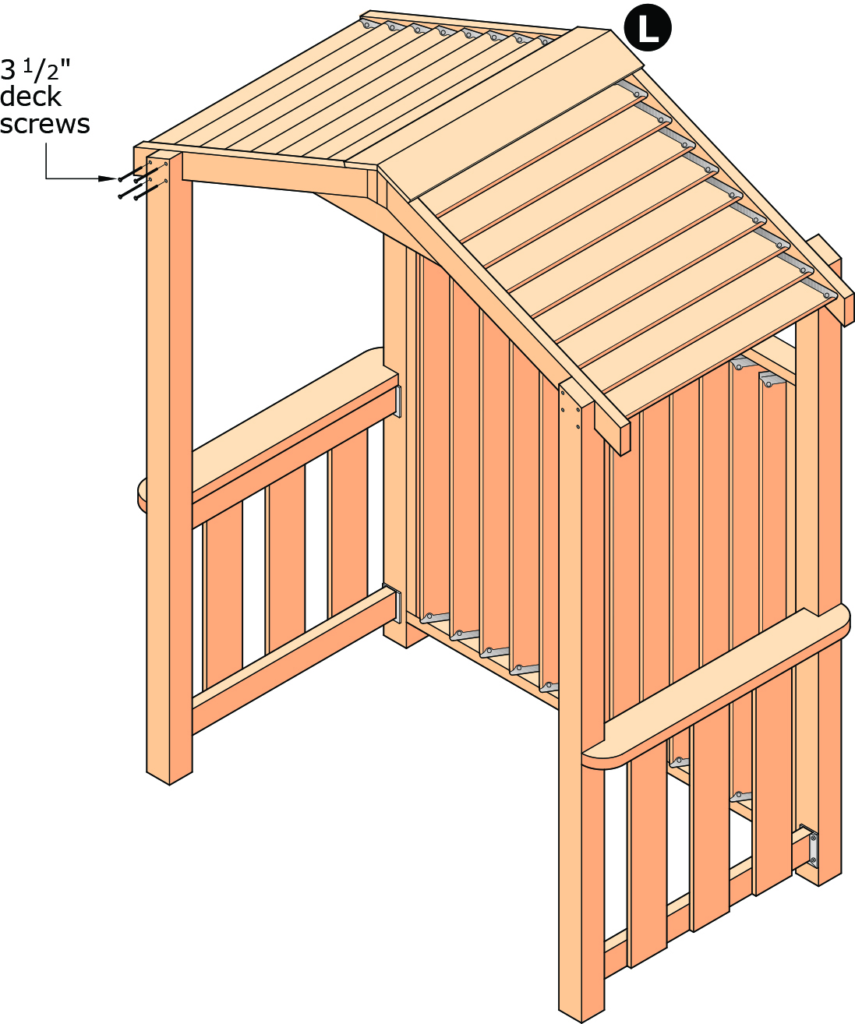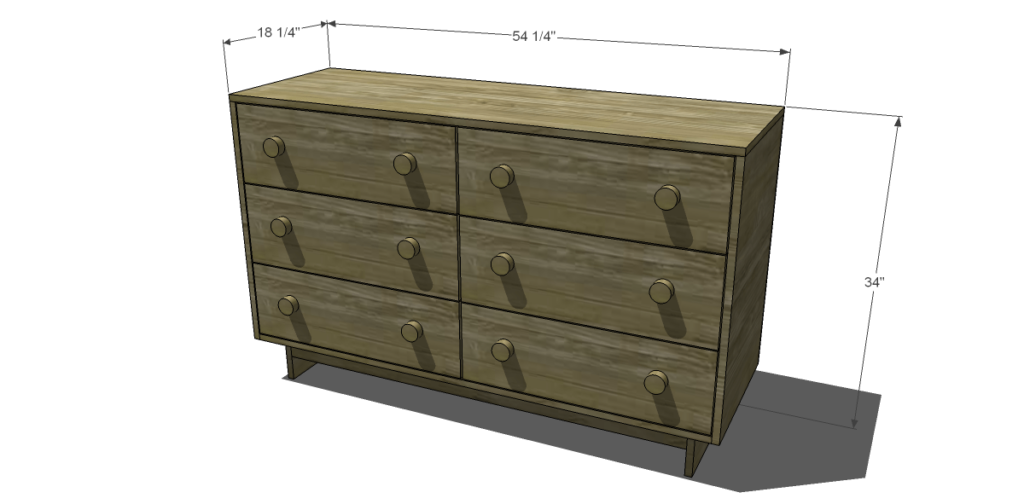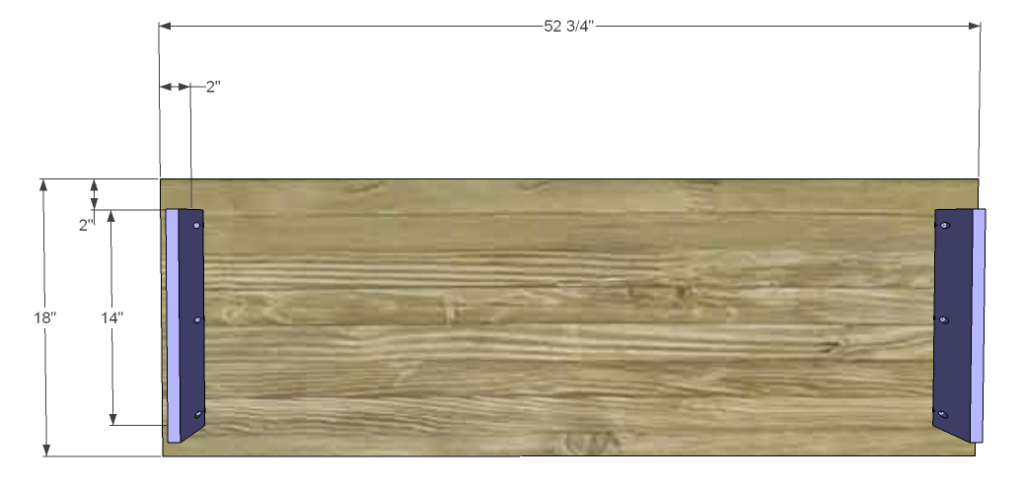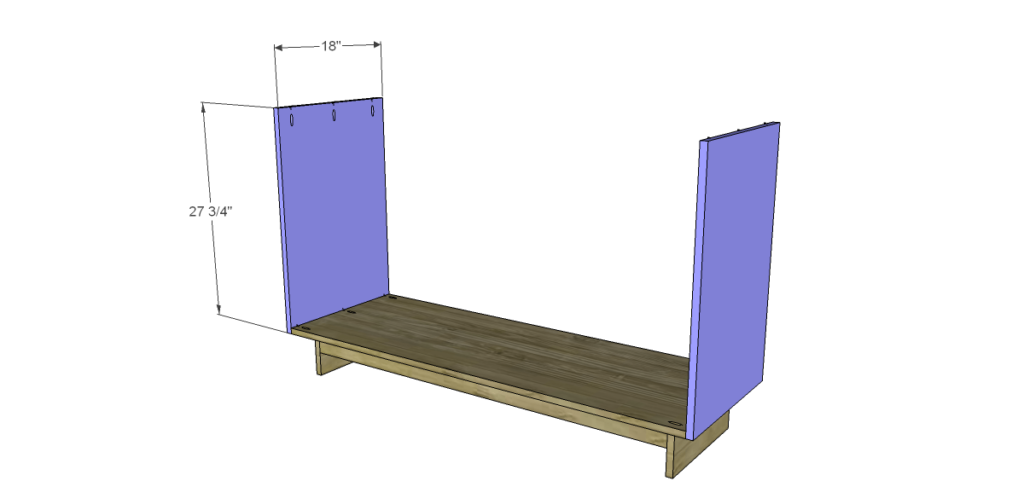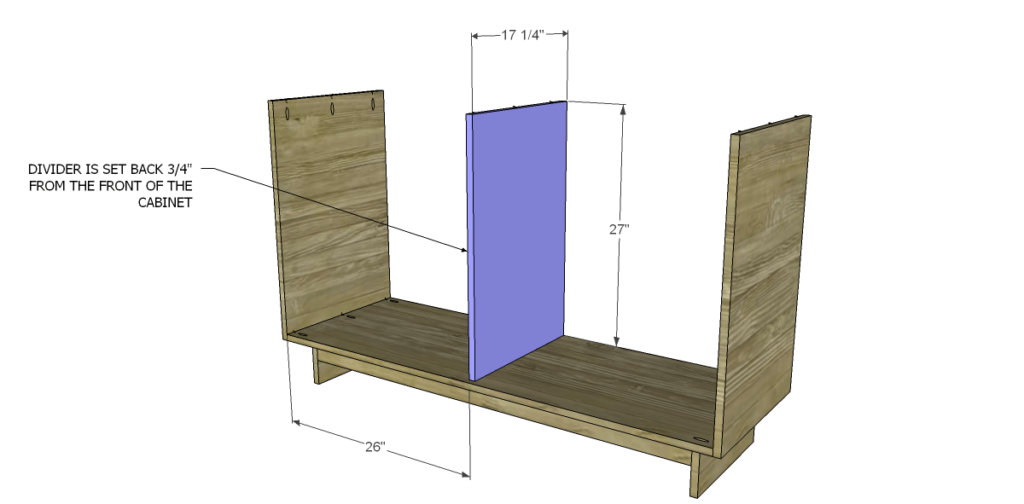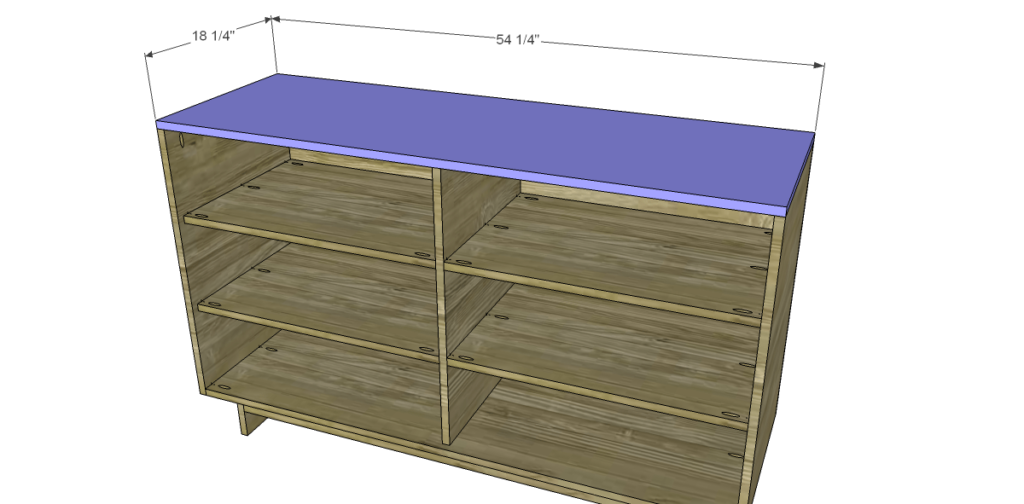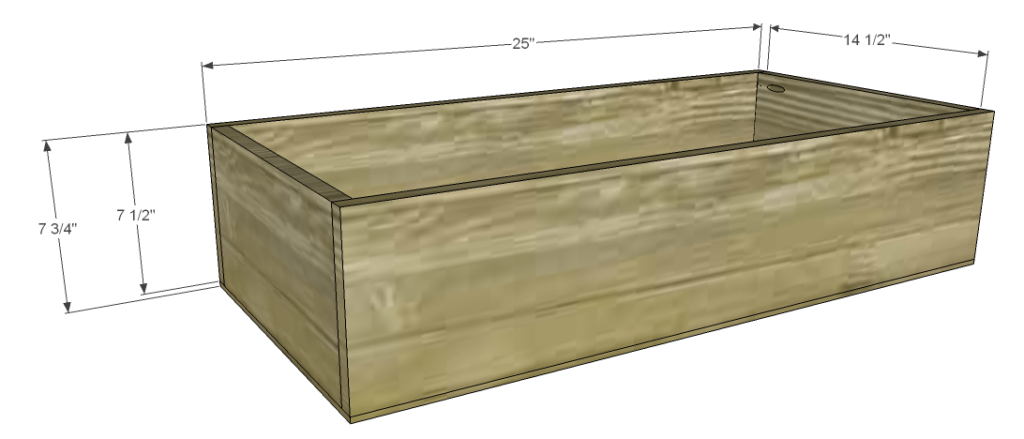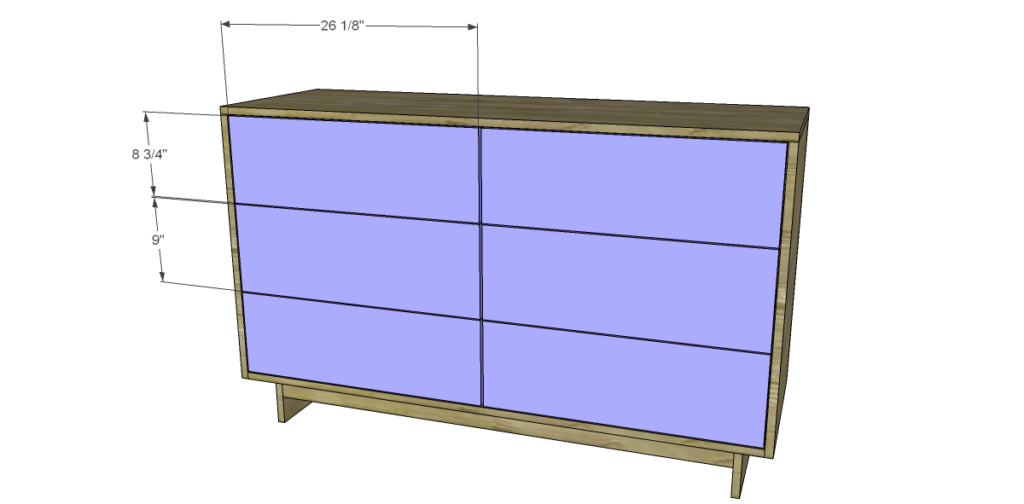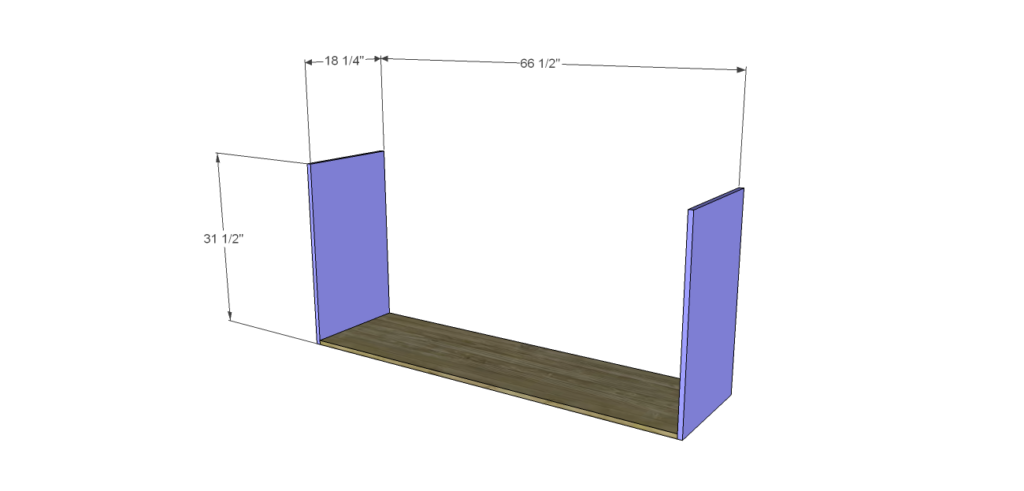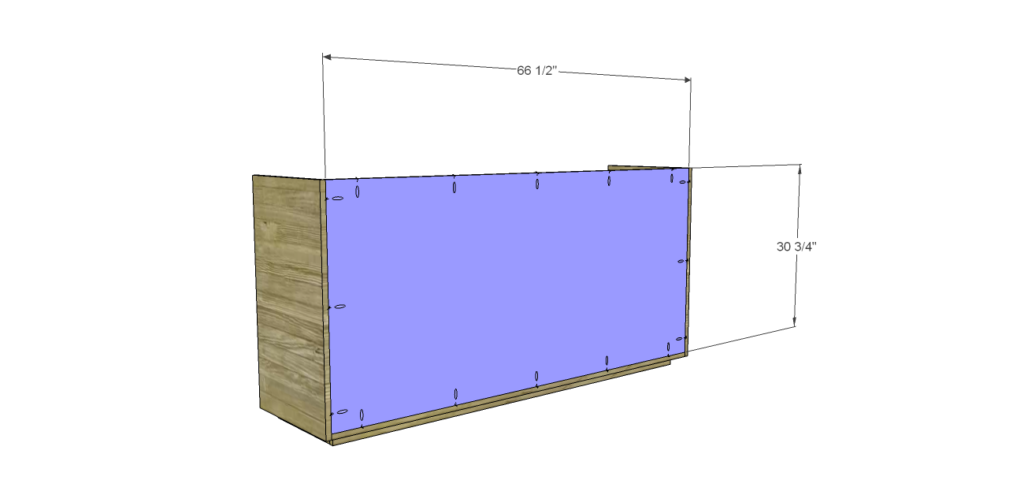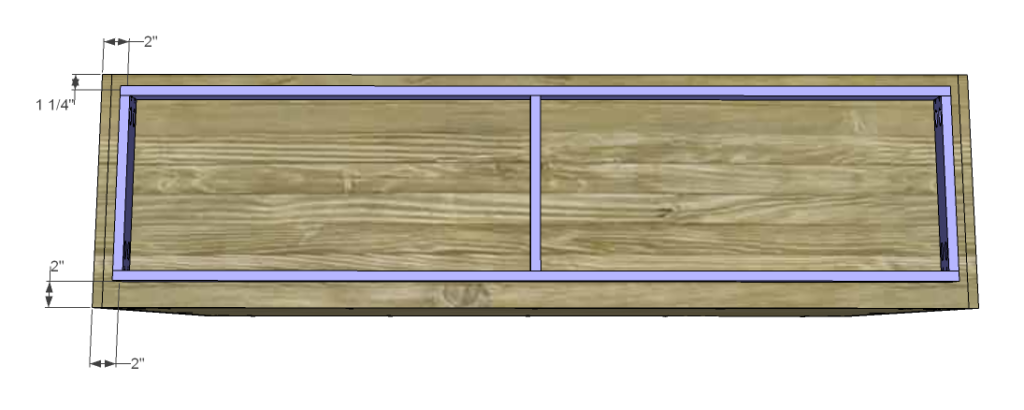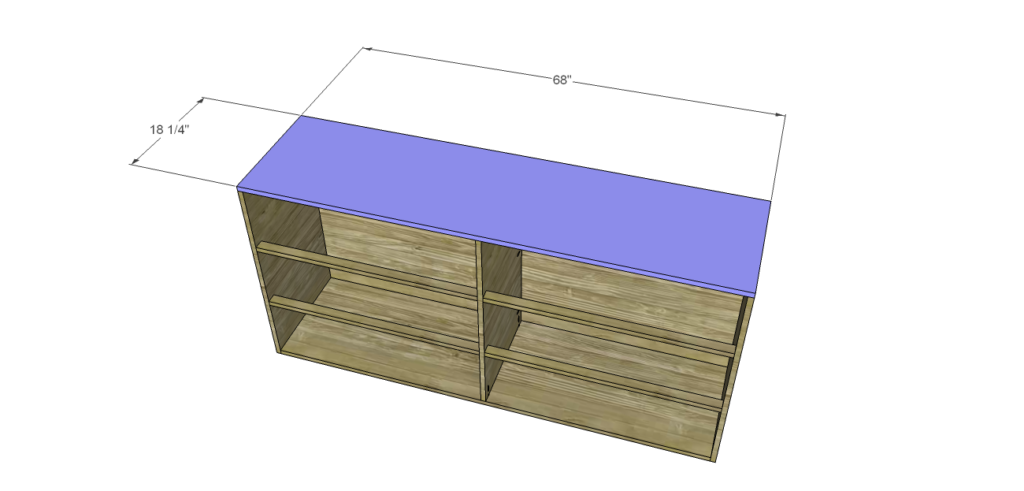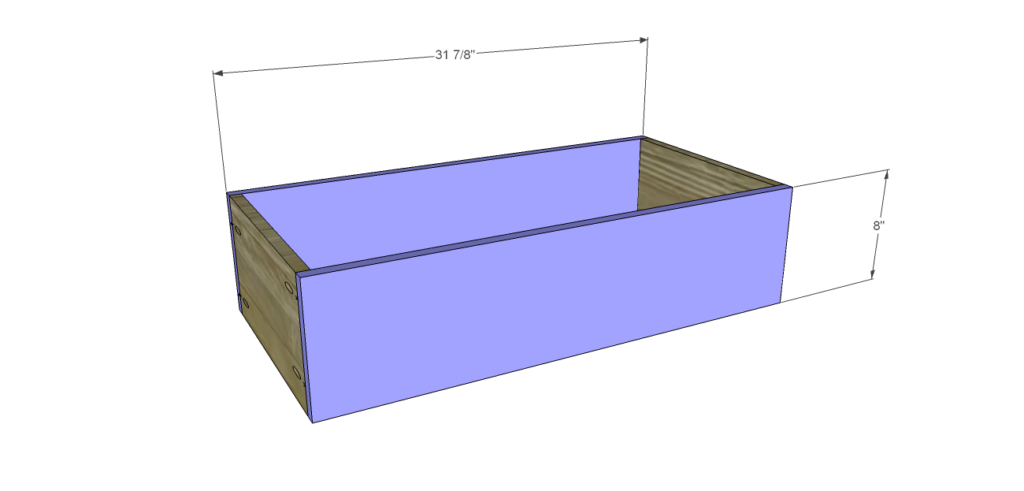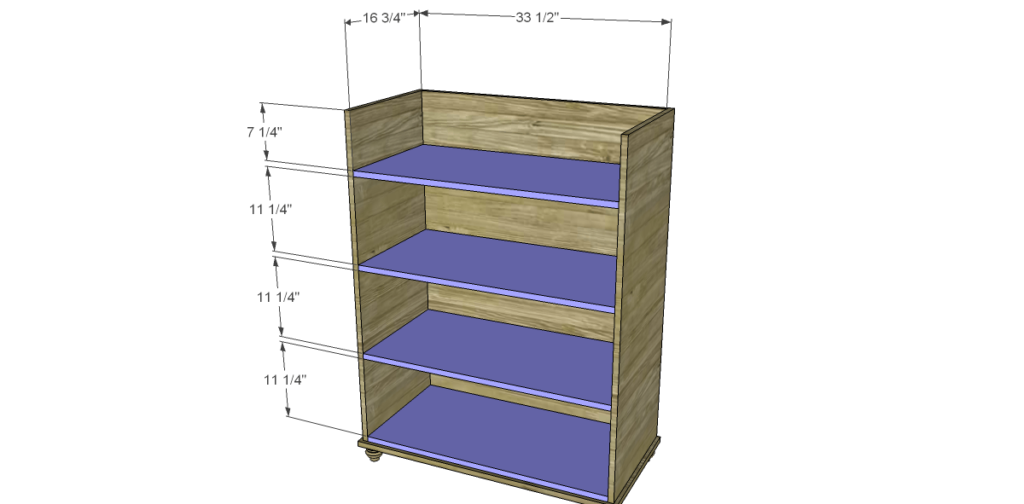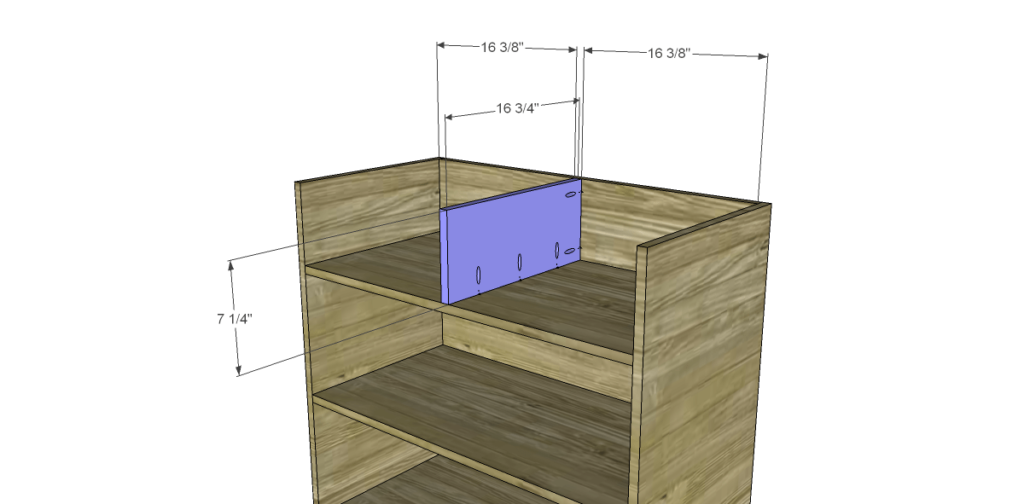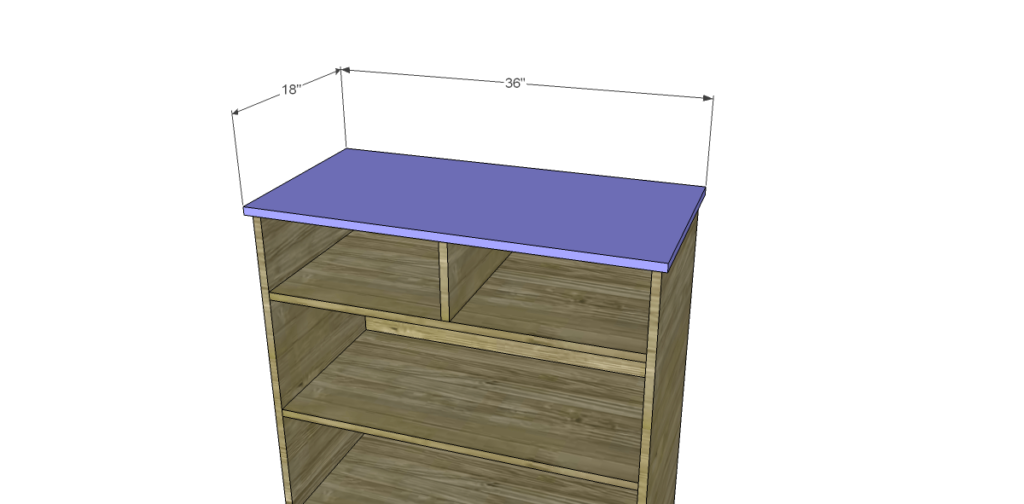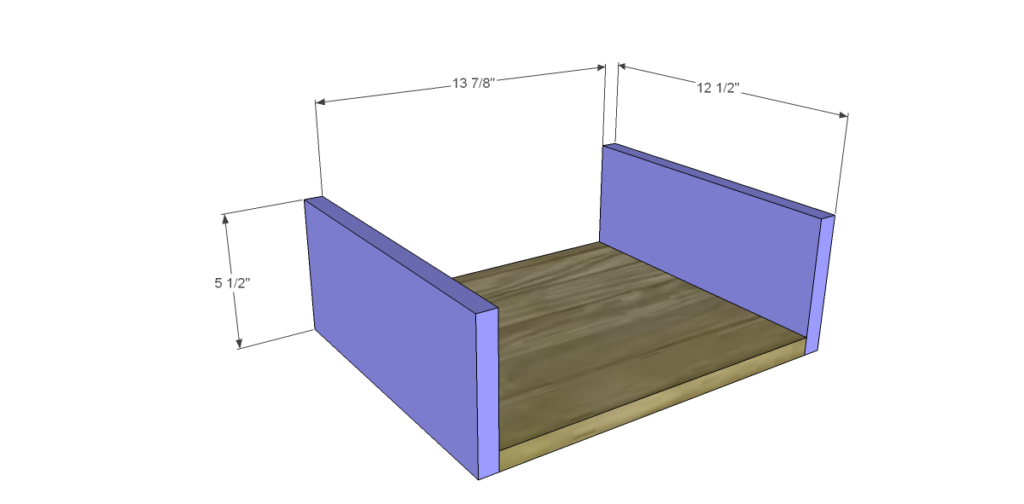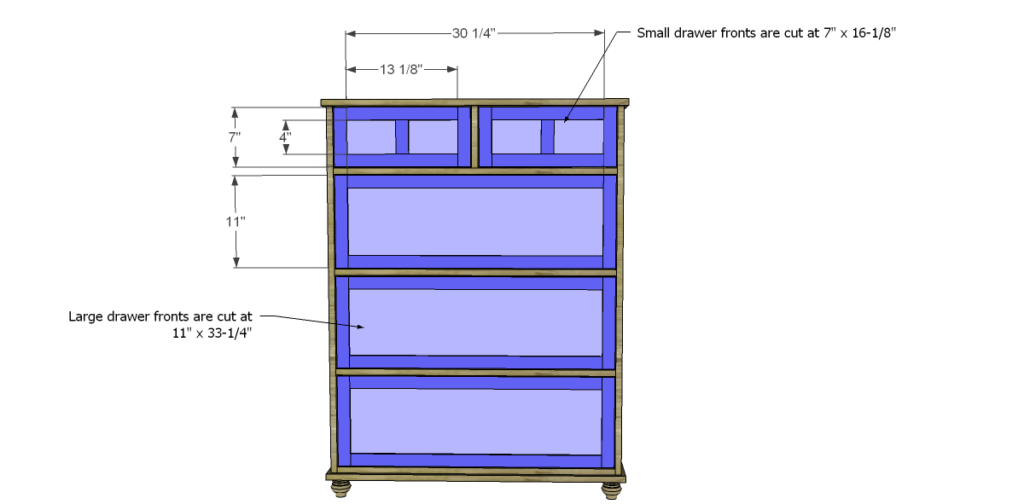

Materials:
- 1-1/4″ pocket hole screws
- 1-1/4″ brad nails
- Edge banding, optional
- 6 sets of 14″ Drawer slides
- Cabinet pulls
- Wood glue
- Sandpaper (100, 150, 220 grits)
- Finishing supplies (primer & paint, or stain, sealer)
Lumber:
- (5) 1×2 at 8′
- (2) 1×6 at 8′
- (4) 1×8 at 8′
- (1) 1×12 at 4′
- (1) 4′ x 4′ sheet of 3/4″ plywood
- (2) 4′ x 8′ sheets of 3/4″ plywood
Cut List:
- (1) 3/4″ plywood at 15″ x 51-1/2″ – Bottom
- (2) 3/4″ plywood at 14-3/4″ x 31-1/4″ – Sides
- (1) 3/4″ plywood at 5-1/4″ x 51-1/2″ – Lower Back Support
- (1) 3/4″ plywood at 25-1/4″ x 51-1/2″ – Back Panel
- (1) 3/4″ plywood at 14″ x 25-1/4″ – Divider
- (1) 1×2 at 51-1/2″ – Upper Front Stretcher
- (2) 1×2 at 25-3/8″ – Lower Front Stretchers
- (2) 1×2 at 21-1/4″ – Mid-Front Stretchers
- (2) 1×2 at 31-1/4″ – Outer Side Framing
- (1) 1×2 at 24-1/2″ – Center Framing
- (12) 1×2 at 14″ – Drawer Spacers
- (1) 3/4″ plywood at 16-1/4″ x 54″ – Top
- (1) 3/4″ plywood at 5-1/4″ x 53″ – Lower Front Trim
- (4) 3/4″ plywood at 12-1/2″ x 21-3/4″ – Upper Drawer Box Bottom
- (8) 1×8 at 12-1/2″ – Upper Drawer Box Sides
- (8) 1×8 at 23-1/4″ – Upper Drawer Box Front & Back
- (2) 3/4″ plywood at 12-1/2″ x 21-3/4″ – Lower Drawer Box Bottoms
- (4) 1×6 at 12-1/2″ – Lower Drawer Box Sides
- (4) 1×6 at 23-1/4″ – Lower Drawer Box Front & Back
- (4) 1×8 at 25-1/4″ – Lower Drawer Fronts
- (2) 1×12 (ripped to 9-5/8″ wide) at 25-1/4″ – Upper Drawer Fronts
Step 1:


Cut the piece for the bottom, cutting the notches with a jigsaw. With the pocket hole jig set for 3/4″ material, drill pocket holes in each end of the bottom. Secure the bottom to the sides using glue and 1-1/4″ pocket hole screws. The back edge of the bottom will be flush with the back edge of the sides which will make the notched edge extend 3/4″ past the sides.
Step 2:

Cut the pieces for the back and the lower back support. Position the lower back support under the bottom securing the piece to the bottom and sides using glue and 1-1/4″ brad nails. Drill pocket holes in the sides and lower edge of the back. Position on top of the bottom and secure in place using glue and 1-1/4″ pocket hole screws.
Step 3:


Cut the piece for the divider and cut the notch using a jigsaw. Drill pocket holes in the bottom and back edge. Position the divider as shown, then secure to the bottom and back using glue and 1-1/4″ pocket hole screws.
Step 4:


Cut the pieces for the stretchers and the framing. Cut notches in the framing pieces as shown (pay special attention to the dimensions of the pieces to make sure the correct ones are cut) using a jigsaw. Drill pocket holes in each end of the mid-front stretchers.
Secure the outer side framing to the sides using glue and 1-1/4″ brad nails. The outside edges will be flush with the outside faces of the sides. Secure the center divider framing piece to the divider using glue and 1-1/4″ brad nails, making sure the piece is centered. Attach the notched stretchers to the outer side framing and center divider framing using glue and 1-1/4″ brad nails. Attach the mid-front stretchers to the outer side framing and center divider framing as shown using glue and 1-1/4″ pocket hole screws.
Step 5:

Cut the pieces for the drawer spacers, securing to the sides and dividers using glue and 1-1/4″ brad nails.
Step 6:

Cut the piece for the top. Position the piece so that the sides overhang by 1/2″ and the front overhangs by 3/4″. Secure in place using glue and 1-1/4″ brad nails.
Step 7:

Cut the piece for the lower front trim. Draw lines for the curves as desired, maintaining the overall dimensions of the piece. Secure to the bottom and outer side framing using glue and 1-1/4″ brad nails.
Step 8:




Cut the pieces for the drawer boxes. Drill pocket holes in all four edges of the bottom as well as each end of the sides. Assemble the drawer boxes as shown using glue and 1-1/4” pocket hole screws. Install the drawer slides according to the manufacturer’s installation instructions, locating them flush with the front edge of the side framing and center divider framing. Make any necessary adjustments. The smaller drawer boxes are the lower drawers – the larger drawer boxes are the upper drawers!
Step 9:

Cut the pieces for the upper drawer fronts. Using a router and a 3/8″ straight bit, cut a dado across each drawer front approximately 1/4″ deep. This will make it look as if there are two drawer fronts instead of one.
Step 10:

Cut the pieces for the remaining drawer fronts. Mark the position for the drawer pulls and drill the holes. The sides of each drawer front will overlap the opening by 1/2″. Starting with the lower drawer fronts, position the pieces so they are 1/2″ above the lower trim. Drive screws through the holes for the drawer pulls into the drawer box to temporarily hold the drawer front in place. Open the drawer, and secure the drawer front using countersunk 1-1/4” screws from the inside. Remove the screws from the holes for the drawer pull then finish drilling the holes. Install the drawer pull.
The middle drawer fronts will be positioned 1/4″ above the lower drawer fronts, and the upper drawer fronts will be positioned 1/4″ above the middle drawer fronts.
Finish as desired.
The original plan can be found at http://designsbystudioc.com/diy-plans-build-spring-rose-dresser/
 [email_link]
[email_link]











